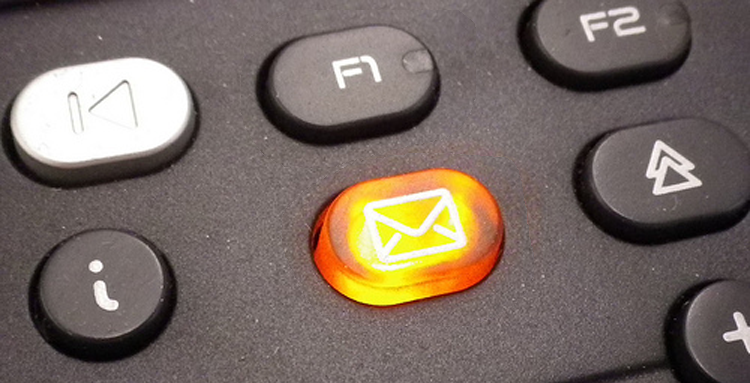Sales Voicemail: What You Need to Know
Voicemail is one of the most powerful sales tools an SMB can wield. It also is one of the most misunderstood.
The problem is that most businesses don’t fully understand the role that voicemail can play in a well-tuned sales effort. All sales staff see is a time-consuming, repetitive task that yields a low response rate. What they miss is the role that voicemail can play in setting up the prospect for the next step in the sales process.
Properly used, voicemail serves as a soft first touch point with a prospect that then leads to a more meaningful callback. With a cold call, an agent must win the time and attention of a prospect immediately. But with a sales voicemail, the prospect gets a first taste of the message when they are able to listen, and this then sets up the next call by boosting the prospect’s receptivity. This, of course, is extremely valuable.
Mastering the art of the sales voicemail can be tricky, however. It requires planning and finesse.
Planning Your Voicemail Approach
The first step is knowing your goal for the voicemail. It isn’t making a sale or noting you called, it is getting the prospect interested enough that they’ll return your call or be receptive to the next touch point.
Like a resume, the goal of a voicemail is just getting your foot in the door and making your audience receptive. The next touch point ideally is a callback from the prospect, but the voicemail also could warm the lead for your next call, pave the way for an email campaign or get the prospect ready so they click on one of your web advertisements in the near future.
Once you’re clear on the goal of sales voicemail, the next step is planning your voicemail campaign. This includes the voicemail strategy, the message, your tone and cadence, and the role that automation will play.
Voicemail Strategy
How many times will you leave a voicemail, and how will you approach each message in the sales process?
One common approach is leaving an initial voicemail that is filled with energy and promise, a second voicemail that initiates conversation by including a question or attempting to address a problem the prospect is facing that your business can fix, and a final last-chance voicemail that acknowledges the prospect is not responding and lets them know you’d still love to hear from them if they ever get the time.
Tone and Cadence
Just like writing an email, you’ll want to think about the tone you’re planning to communicate in your voicemail. For cold calls, it might be energy and excitement. For follow-up voicemail, it could be a sense of urgency and importance.
Planning your cadence also is important. Nobody likes robocalls or scripts, so have a voicemail script but recite it from memory and at a natural pace that sounds spontaneous instead of scripted. Voicemail must be precise, but it can’t sound stiff or rehearsed.
Automation
Cold calling is tiring business, so it is no wonder that many sales agents avoid it as much as possible. This is no less true for sales voicemail. One thing your business should consider is automation that can speed up the process and make the sales staff stop avoiding it.
This can include a series of prerecorded voicemail messages, or you can leverage your CRM for automated calling campaigns where the agent automatically is handed from one call to the next without the room for procrastination and delay. Good contact management systems such as Agile CRM come with auto-dial functionality that can make short work of voicemail campaigns.
What to Include in Your Voicemail
The most important consideration, of course, is what your business will say in the voicemail. Here are the elements you should include.
Give context. Warm up the cold call by leading with why you are calling. Did they visit your web site or sign up for a white paper? Did you see them on LinkedIn? Is the call following up on a chance meeting at a conference? Let the prospect know the relationship. You might start with, “Thanks for signing up for our mailing list. We hope you’re enjoying it and finding it useful.”
Show value. In five seconds or less, communicate how you can make their life better. For example, “Agile delivers an affordable all-in-one CRM that boosts sales by 20 percent for the average SMB.”
Clear objective. Be direct and clearly state what you want to happen as a result of the voicemail. For instance, “I want to schedule 15 minutes to talk about your CRM needs. Would 2pm on Wednesday work for a demo?”
Contact info given twice. Most people won’t be ready when you give your contact information the first time, so always say your phone number and pertinent contact info twice.
A few other pointers:
Vary the language. Nobody likes scripts, so make sure that each voicemail is unique and uses different words and concepts. Assume that your prospect has heard every one of your previous voicemails and seen your marketing material. Keep it real.
Make it less than 30 seconds. When planning your voicemails, think elevator pitch. Nobody wants a long voicemail message, so refine your messages until they are 30 seconds or less. Remember, your voicemail is just about getting to the next touch point. Don’t overload prospects with too much content.
The sales voicemail is an art. Now that you have the nuts and bolts, use this potent tool and experiment until you get it right. The reward is great if you get past the confusion.

No Comments